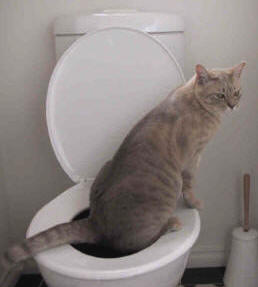Reasons Flushing Cat Poop Down Your Toilet Can Cause Problems - Tips for Safe Disposal
Schedule ServiceWhat're your thoughts and feelings on How to Dispose of Cat Poop and Litter Without Plastic Bags?

Intro
As pet cat owners, it's necessary to bear in mind just how we dispose of our feline close friends' waste. While it may appear practical to flush pet cat poop down the toilet, this practice can have destructive effects for both the setting and human wellness.
Alternatives to Flushing
Thankfully, there are much safer and a lot more responsible ways to deal with feline poop. Think about the complying with choices:
1. Scoop and Dispose in Trash
The most usual method of getting rid of pet cat poop is to scoop it into a biodegradable bag and toss it in the trash. Make sure to utilize a specialized trash inside story and deal with the waste promptly.
2. Usage Biodegradable Litter
Go with naturally degradable pet cat litter made from products such as corn or wheat. These clutters are environmentally friendly and can be securely taken care of in the garbage.
3. Hide in the Yard
If you have a backyard, think about hiding pet cat waste in an assigned area away from vegetable yards and water resources. Make certain to dig deep sufficient to prevent contamination of groundwater.
4. Mount a Pet Waste Disposal System
Buy a family pet waste disposal system especially made for feline waste. These systems make use of enzymes to break down the waste, reducing odor and environmental influence.
Health Risks
Along with environmental worries, purging feline waste can likewise pose wellness threats to human beings. Cat feces might consist of Toxoplasma gondii, a parasite that can trigger toxoplasmosis-- a potentially severe disease, especially for pregnant women and individuals with weakened body immune systems.
Environmental Impact
Flushing pet cat poop presents damaging virus and parasites into the water, positioning a considerable danger to aquatic ecological communities. These impurities can adversely influence aquatic life and compromise water high quality.
Verdict
Accountable animal possession expands beyond providing food and shelter-- it additionally entails proper waste monitoring. By avoiding flushing cat poop down the toilet and opting for alternate disposal techniques, we can minimize our ecological footprint and safeguard human health and wellness.
Why Can’t I Flush Cat Poop?
It Spreads a Parasite
Cats are frequently infected with a parasite called toxoplasma gondii. The parasite causes an infection called toxoplasmosis. It is usually harmless to cats. The parasite only uses cat poop as a host for its eggs. Otherwise, the cat’s immune system usually keeps the infection at low enough levels to maintain its own health. But it does not stop the develop of eggs. These eggs are tiny and surprisingly tough. They may survive for a year before they begin to grow. But that’s the problem.
Our wastewater system is not designed to deal with toxoplasmosis eggs. Instead, most eggs will flush from your toilet into sewers and wastewater management plants. After the sewage is treated for many other harmful things in it, it is typically released into local rivers, lakes, or oceans. Here, the toxoplasmosis eggs can find new hosts, including starfish, crabs, otters, and many other wildlife. For many, this is a significant risk to their health. Toxoplasmosis can also end up infecting water sources that are important for agriculture, which means our deer, pigs, and sheep can get infected too.
Is There Risk to Humans?
There can be a risk to human life from flushing cat poop down the toilet. If you do so, the parasites from your cat’s poop can end up in shellfish, game animals, or livestock. If this meat is then served raw or undercooked, the people who eat it can get sick.
In fact, according to the CDC, 40 million people in the United States are infected with toxoplasma gondii. They get it from exposure to infected seafood, or from some kind of cat poop contamination, like drinking from a stream that is contaminated or touching anything that has come into contact with cat poop. That includes just cleaning a cat litter box.
Most people who get infected with these parasites will not develop any symptoms. However, for pregnant women or for those with compromised immune systems, the parasite can cause severe health problems.
How to Handle Cat Poop
The best way to handle cat poop is actually to clean the box more often. The eggs that the parasite sheds will not become active until one to five days after the cat poops. That means that if you clean daily, you’re much less likely to come into direct contact with infectious eggs.
That said, always dispose of cat poop in the garbage and not down the toilet. Wash your hands before and after you clean the litter box, and bring the bag of poop right outside to your garbage bins.
https://trenchlesssolutionsusa.com/why-cant-i-flush-cat-poop/

As an enthusiastic reader about Can You Flush Cat Poo or Litter Down the Toilet?, I thought sharing that excerpt was worth the trouble. You should take the time to promote this post if you enjoyed reading it. Thanks for your time. Visit us again soon.
Click For More Information